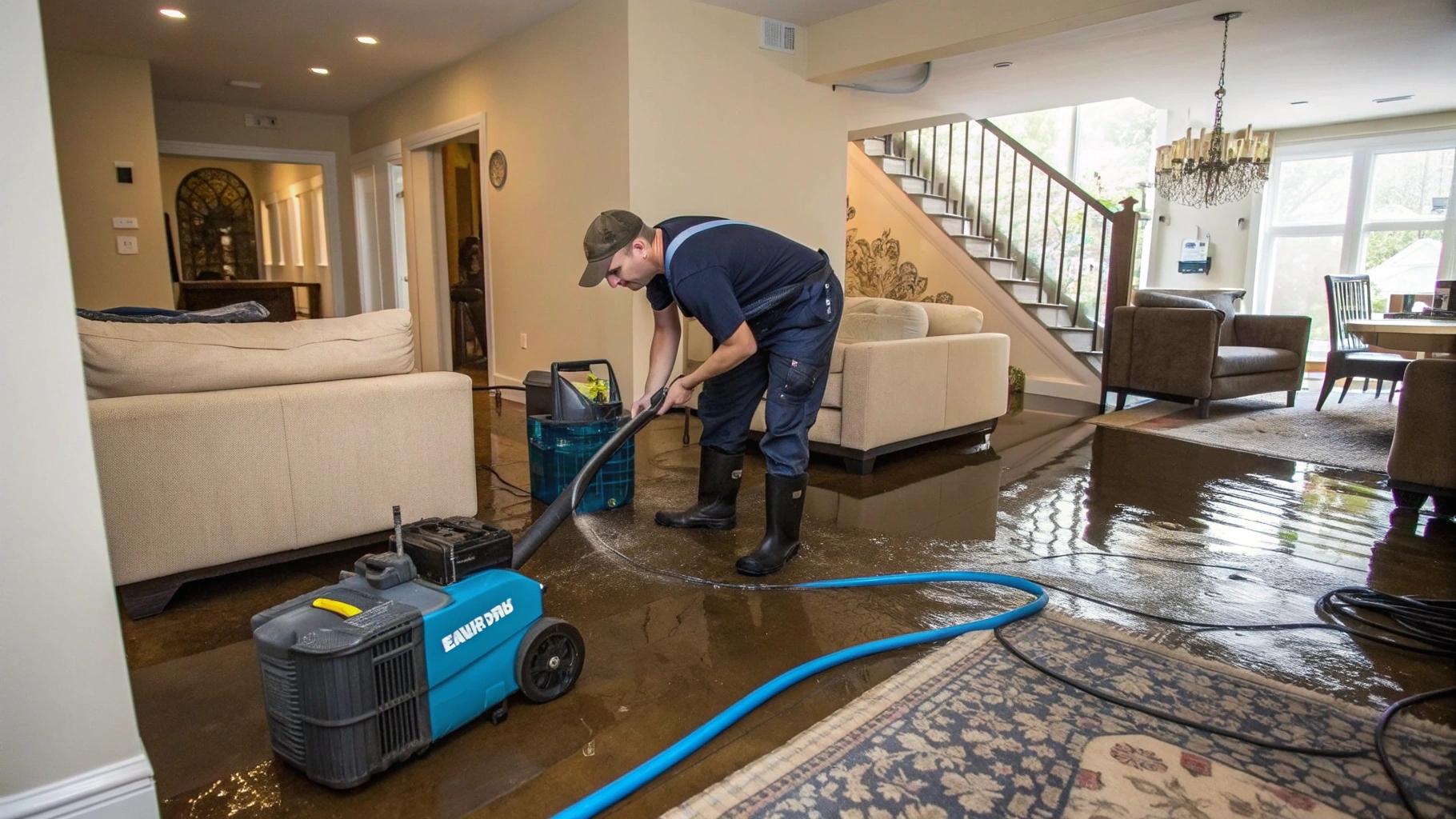Summary
When water floods your home, every minute counts. The longer it lingers, the greater the risk of mold, warped floors, and weakened walls. Professional water removal services use advanced equipment and expertise to stop that damage before it spreads. This blog explains why professional help matters and how experts handle emergency water removal step by step.
–
Introduction
Unexpected water damage can turn a normal day into a stressful one. Whether caused by a burst pipe, heavy rainfall, or appliance failure, water can quickly find its way into places you can’t see, beneath floors, behind walls, and inside insulation. If it isn’t handled quickly, that trapped moisture can lead to expensive repairs and serious health concerns.
Professionals trained in water removal know how to locate hidden moisture, dry it safely, and prevent long-term problems. Their process isn’t just about pumping out water; it’s about protecting your home’s structure and ensuring it remains a healthy space to live in.
Why Professional Water Removal Matters
Water damage looks straightforward on the surface, but it’s rarely that simple. Water seeps into building materials fast, breaking down drywall, weakening wooden frames, and creating the perfect environment for mold growth. Mold can start forming within 24 to 48 hours, long before you might notice it.
That’s where professional expertise comes in. Trained technicians use high-powered extraction tools, drying systems, and moisture detection devices to ensure no trace of water is left behind. They also understand how to work safely around electrical systems, flooring, and insulation. This level of precision for water removal keeps minor issues from turning into major repairs later.
The Professional Water Removal Process: Step by Step
When an emergency call comes in, professional crews move fast. Their process follows a structured plan that ensures every inch of the property is inspected, dried, and restored properly. Below are the five key steps experts take to protect your home and stop further damage.
1. Inspection and Assessment
The first step is understanding the full scope of the damage. Professionals inspect the affected area and identify where the water originated, from a leaking roof, broken pipe, or flooded basement. Using moisture meters and thermal cameras, they detect hidden wet spots that can’t be seen with the naked eye. This assessment helps them design a targeted strategy for efficient water removal and drying.
2. Water Extraction
Once the source is identified and stopped, standing water must be removed immediately. Experts use industrial-grade pumps and vacuums to extract large volumes of water in minutes. This water extraction process prevents moisture from soaking deeper into porous materials like wood and carpet. Quick removal minimizes the chance of swelling, warping, or mold growth.
3. Drying and Dehumidification
Even after the visible water is gone, moisture lingers in the air and on surfaces. High-speed air movers and commercial dehumidifiers are brought in to pull out that hidden dampness. Professionals carefully monitor humidity levels throughout this phase, ensuring every corner, from the baseboards to the subfloor, is completely dry before moving forward.
4. Cleaning and Sanitizing
Water damage often brings more than just moisture. It can introduce bacteria, dirt, or contaminants depending on the source. Specialists clean, disinfect, and deodorize all affected areas using safe antimicrobial solutions. According to the EPA’s Mold and Flood Cleanup Guide, proper cleaning and drying are essential to prevent mold and protect both residents and cleanup workers. Any furniture or materials that can’t be salvaged are removed to ensure the space is clean and healthy again.
5. Restoration and Repairs
After drying and sanitizing, the final step is restoration. This may include replacing damaged drywall, repainting, repairing flooring, or rebuilding parts of the structure. The goal is to return your home to its pre-damage state, clean, dry, and structurally sound, with measures in place to prevent future issues.
Conclusion
Professional water removal is far more than just drying a floor; it’s a methodical process designed to prevent mold, protect your home structure, and save you from long-term repair costs. With their expertise, specialized tools, and commitment to thoroughness, restoration teams ensure that even hidden moisture is eliminated. From rapid water extraction to complete restoration, professionals bring homes back to safety, fast, effective, and stress-free.
FAQs
Q1. How quickly should I call for professional water removal after flooding?
A: Immediately. The faster professionals begin water removal, the less chance there is for mold to grow or structural damage to spread, ideally within the first 24 hours.
Q2. What’s the difference between water removal and water extraction?
A: They’re closely related. Water extraction is the physical process of pumping or vacuuming standing water, while water removal includes extraction plus drying, dehumidifying, and sanitizing to ensure no moisture remains.
Q3. Can I handle small water damage myself?
A: For small spills, yes, but if water has soaked into floors, walls, or carpets, it’s best to call professionals. Hidden moisture can lead to mold or rot even when surfaces appear dry.
